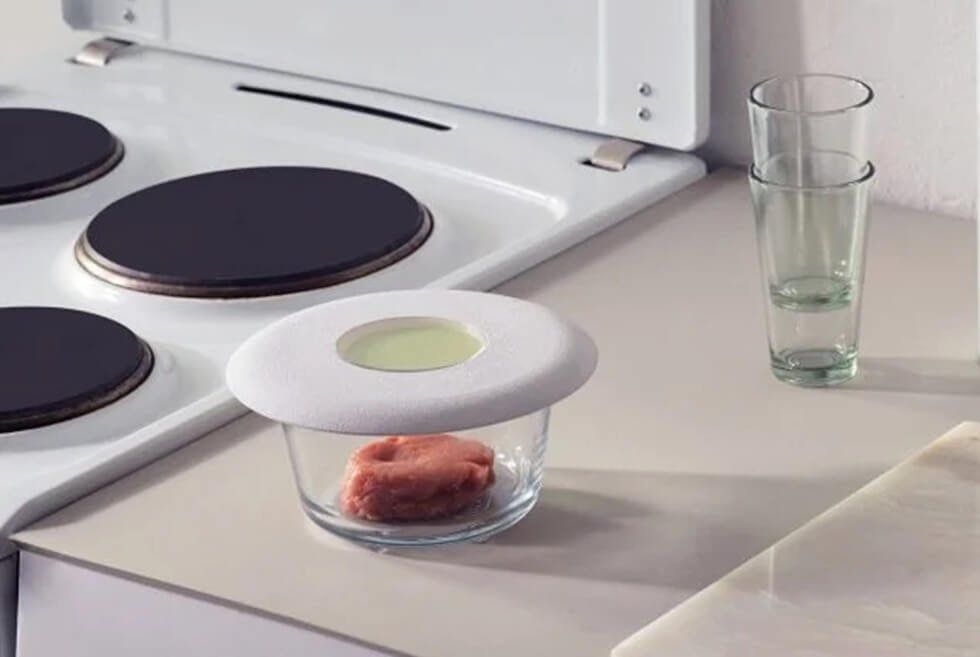UDK Berlin graduate Kimia Amir-Moazami designed the Vorkoster in the hopes of tackling unnecessary food waste. It’s a 3D-printed lid that determines if a food is still safe to eat or not so consumers do not have to rely on generic expiry dates.
How does it work? The lid features a pH-sensitive foil in the center that changes color when it detects a spoiled protein-based food like meat or fish. As these food expire, they release ammonia gas that reacts with the film, which is made from algae and coated in a specially developed indicator dye. The color changes from light green to bright purple.
“The Vorkoster is intended to offer an alternative to the standardized expiry date and to provide assistance for an unpackaged future,” says Amir-Moazami. It serves as a reminder in an “unobtrusive and analogue way to consume food before it is too late.”
“Cooling interruptions during the transport and production of food change the shelf life of the products. Fresh food reacts to external influences and therefore cannot be standardized exactly. Expiry dates do not take these differences into account, they contain a safety buffer that cannot be used by consumers,” she explained adding that the “special advantage of pH functionality is the direct reaction to the food” regardless of how and where the product was bought.
The Vorkoster shows when food is about to expire and becomes independent of the packaging. It serves as a reminder to consume the perishable food in the fridge and thus lessening or preventing food waste. It comes in lid form that’s designed to cover any type of tub or bowl so it stays flexible and not limited to one type of container.
Amir-Moazami first introduced the first working prototype of Vorkoster in 2021 as her graduation project and presented it at Dutch Design Week as part of the Secrid Talent Podium 2023. She believes that it could hit the shelves in the next two years after it gets meticulously tested to guarantee it functions flawlessly.
Check It Out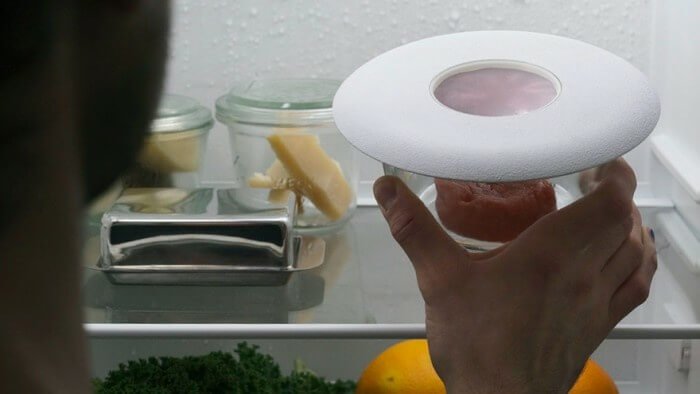
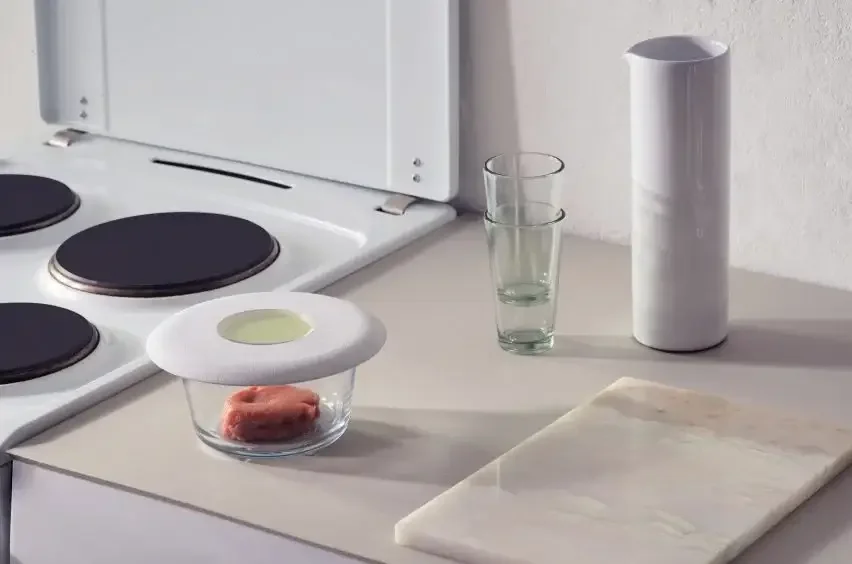
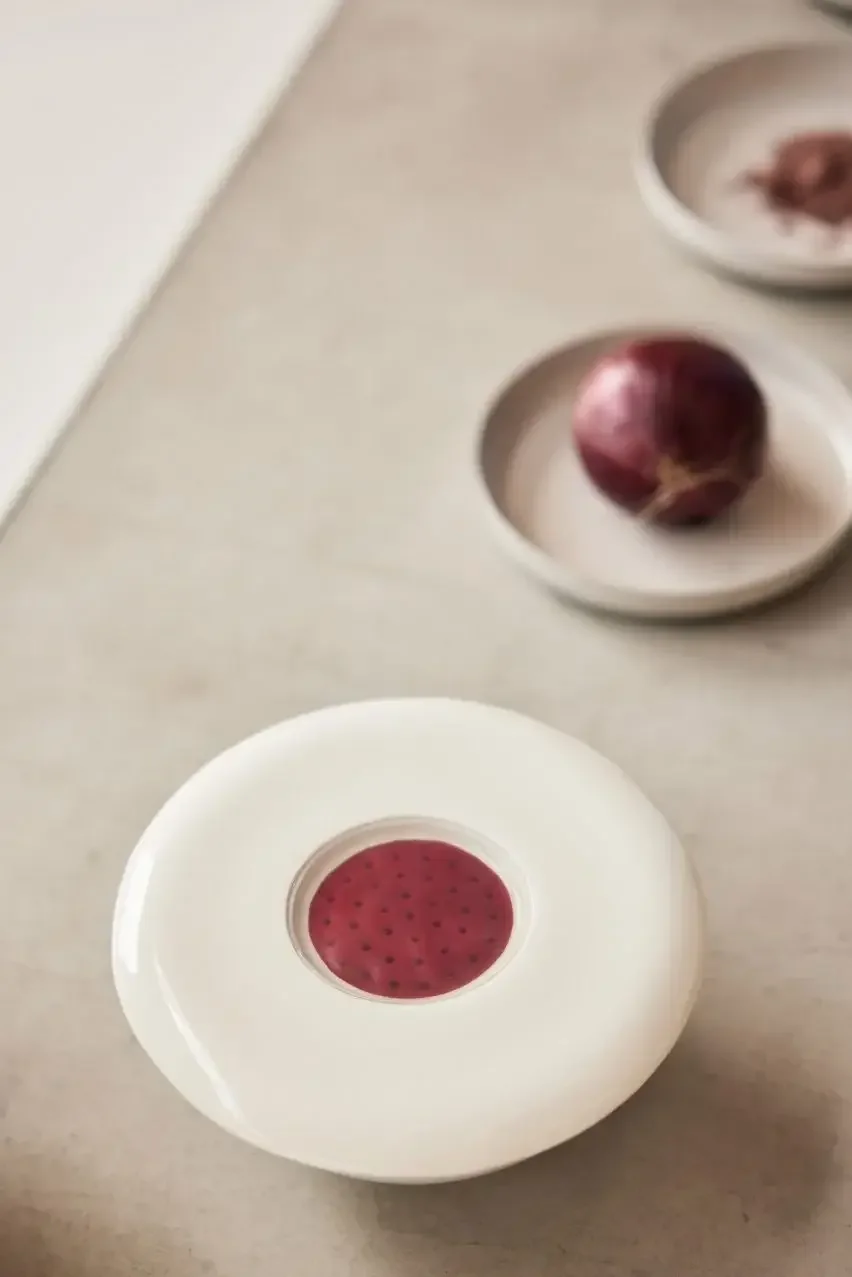
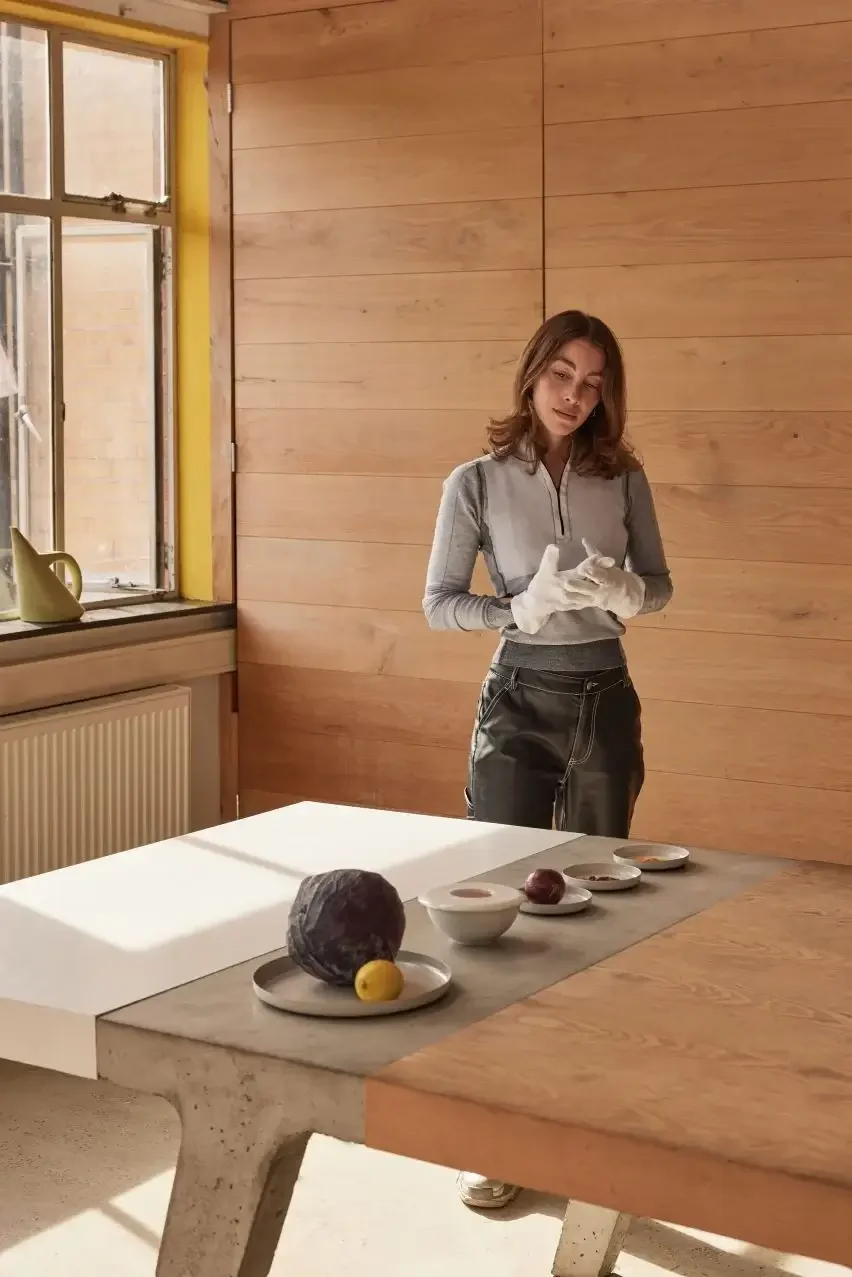
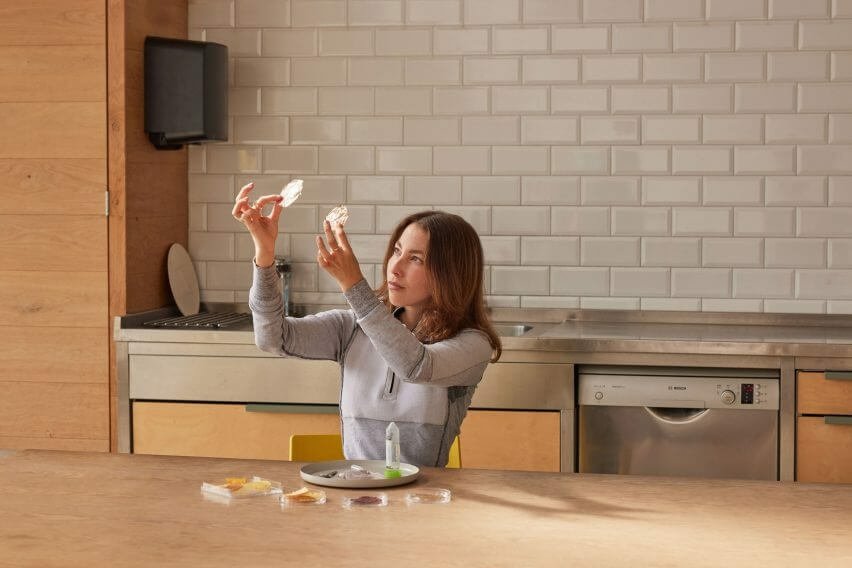
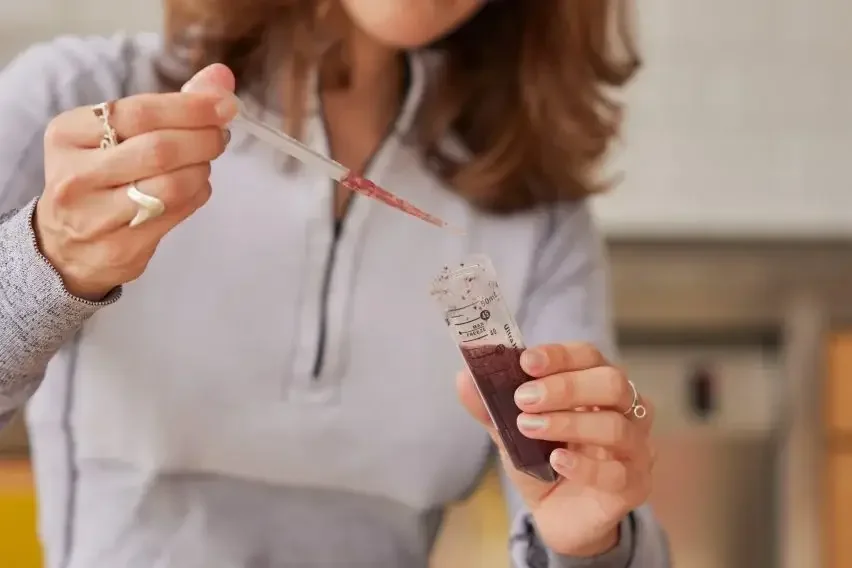
Images courtesy of Anouk Moerman/Secrid

